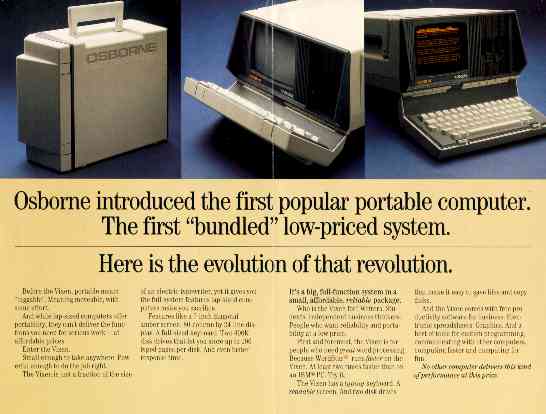In 1982 an emerging computer company was roaring onto the stage. Osborne computer had the world’s first “luggable” computer. It was portable, but it was so heavy at 26 pounds, that you didn’t just carry it – you hauled it around. But it was a leading computer innovation at the time.
The product had much going for it. It bundled software together that was more valuable than the $1,800 it charged for the computer. It was the first computer that you could take with you instead of it being permanent and fixed in one place.
But the marketing blunder was a human one – created by the owner, Adam Osborne.
The story goes that as his team was closing a huge deal with a distributor from Europe, Osborne popped into the meeting just as the contract was about to be signed. The excited saleswoman said we are signing a large contract with our new distributor, and they are buying The Executive. (the model name of this product).
Lessons in Marketing Blunders
Osborne, who was a brash as he was smart, poked his head into this meeting where the deal was being finalized and commented – “if you like this model, wait to you see The Cherry Bomb” (their next model) that is coming out soon.
The customer pushed back on the contract and said, — “on second thought, maybe I’ll wait until you launch the new model if it is that good.”
The blunder was not managing the messaging around a new product launch.
According to Wikipedia…
The Osborne effect is a term referring to the unintended consequences of a company pre-announcement made either unaware of the risks involved or when the timing is misjudged, which ends up having a negative impact on the sales of the current product. This is often the case when a product is announced too long before its actual availability. This has the immediate effect of customers canceling or deferring orders for the current product, knowing that it will soon be obsolete, and any unexpected delays often mean the new product comes to be perceived as vaporware, damaging the company’s credibility and profitability.
Lessons in Launching New Products
- Create a clear messaging plan that is in place so that you can manage sales of existing products right at the point of a new product introduction. This plan should include who should talk about the new product and when you want to let the news out into the marketplace.
- Plan for cannibalization during this launch period.
- Consider how to keep the sales of the existing product to markets where the innovation won’t be as important, or the higher price will keep customers in the current product platform Think about how Apple does this with new versions of the iPhone or new car models introductions while existing year models receive deep discounts.
- New products must have big improvements and differences, or customers will not trade up. It is important to have significant pricing differences between products to help communicate the added benefits of the new products.
I’m sure Mr. Osborne is a nice guy. I’m thankful for this blunder because I learned this lesson by observing the mistake it has created for many brands during my career. I’m always thinking about the “Osborne Effect” when planning a new product launch so that the current version isn’t left in the dust.
How well are you planning your new product introduction and what activities are in place to prevent you from creating your marketing blunder?
______
Need help with a new product launch? Could you use someone with an alternative perspective to help make sure you have covered your bases? Send me a telegram (if you are still in 1982) or an email: jeffreylynnslater@gmail.com
Photo: The Osborne Company (now defunct – RIP)




